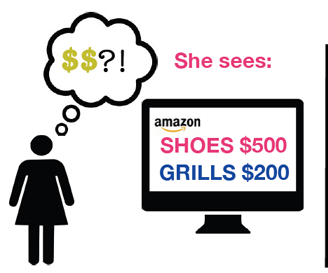When the software industry moved towards the cloud, updates ran over the air and the compact disc became obsolete. Now customers expect hardware to change too.
Ask a random system administrator veteran about software updates and he will likely start to shiver. It’s not that long ago when rolling out an update meant having to switch off all computers that were connected to the mainframe, or – even worse – manually updating all the systems by disc. The worst part: if something was wrong, it would take ages before the patch would reach you.
The cloud has changed this for the good. It didn’t take long for software companies to find out that being able to update frequently would be a huge advantage. The business model had to shift accordingly. This is when ‘software as a service’ (SaaS) occurred. And not just software, there’s even the collective noun ‘Everything as a Service’ or XaaS.
The big difference is in the money: instead of a one off, one usually pays a subscription or usage fee. This is not only good for the software company that suddenly gets a revenue stream, but also for the customer since he can now simply calculate what value the software should bring to be an addition to his company or household.
Now let’s get back to those updates. Because we’re suddenly talking about subscriptions to software that can be updated over the air, or that’s running in the cloud, it’s not just easier to improve: we expect software to improve. Popular smartphone applications like Facebook are even updated on a weekly basis.
It didn’t stop here: hardware manufacturers do it too. Tesla is notorious for running over-the-air updates that for instance improve the autonomous capabilities of the car or just raise the steering wheel a bit when you stop the engine, to make it more easy to get out of the car.
And Tesla is definitely not the only one. The high-end audio brand Bowers & Wilkins promises to update the performance of its brand new PX headphones over the air. So we are officially living in a time where we can expect basically every piece of hardware to improve over time, as long as there’s at least one chip in it.
There is a downside, though. Over the air updates are undeniably an improvement of our lives, but they usually come with an app. The pain with apps is that they need to be updated to remain functioning properly. A question that has not been answered yet: how long is a reasonable timespan to support an accompanying app?
Apple updates its mobile operating system until five years after an iPhone has come to market. Considering the average lifespan of an iPhone of only three years, this seems reasonable.
On the other side there’s Denon, a manufacturer of receivers that decided to completely redo its smartphone app in 2016. The old app, needed for ‘old’ receivers, has become obsolete from that moment on.
Now what’s the average lifespan of a receiver? I wouldn’t be surprised if it’s more than ten years, which means that people with a 2014 Denon receiver will have a non-functioning app anytime soon that will never come back to life. This certainly doesn’t sound like best practice to me.







